Pan Am Gets Underway in Canada
Lake St. Francis hosts teams from Mexico, First Nations, Canada and U.S.
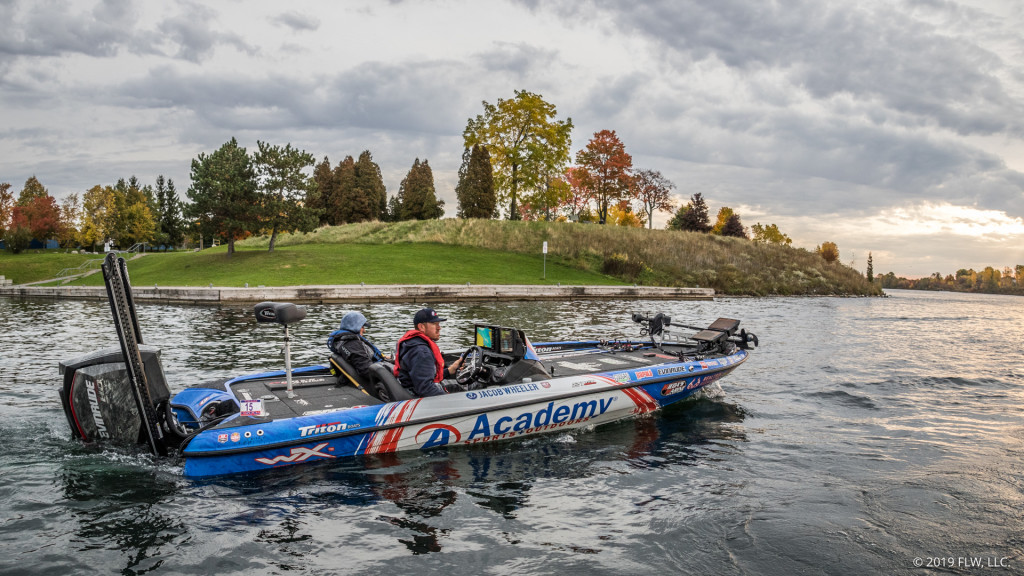
With the official training day in the rearview, the Pan American Bass Championship starts Thursday, Oct. 16, on Lake St. Francis in Cornwall, Ontario. Teams from Mexico, the Akwesasne First Nation, Canada and the United States will be competing the next two days for glory and country, but also to help along the movement to make bass fishing an Olympic sport.
Day one canceled due to weather
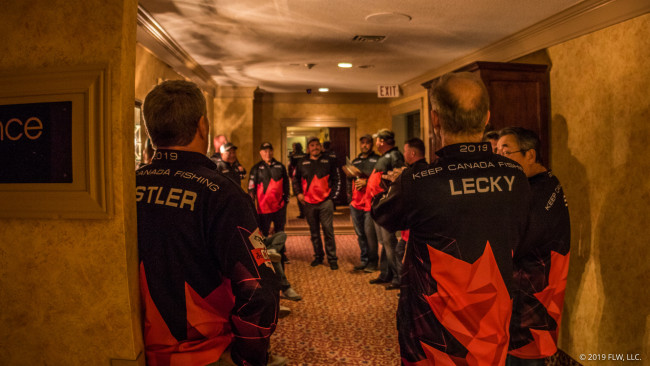
The format
Taking place on Thursday and Friday with takeoff at 7:45 a.m. ET and weigh-in 3:45 p.m. ET at Marina 200 in Cornwall, the event operates on both a team and country level. There are eight teams from the U.S. and Canada, with seven teams from Mexico and three from the Akwesasne First Nation. Individual teams will weigh their best five fish per day and compete for medals, but the finish order of the countries will be determined by average weight, so it’s very important that every team does well, because they all count to the country average. The tournament is sanctioned by the Pan American Sportfishing Federation.
Weigh-in can be watched live each day on the CSFL facebook page.
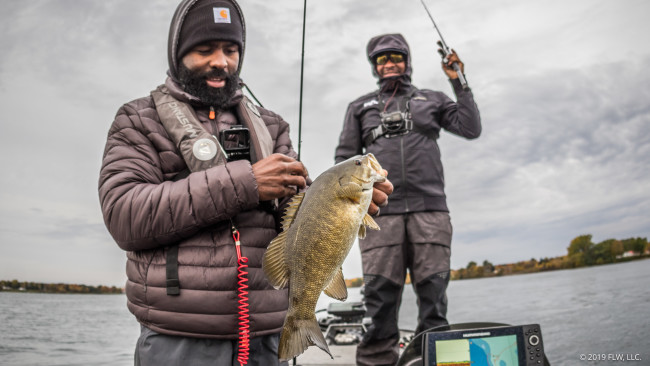
The practice report
Though Wednesday was the official training day, many of the anglers have spent several days on the water by now. Lake St. Francis is essentially a pool between dams on the St. Lawrence River, and the smallmouth fishing is just as good as anywhere else along the famous river.
“We got about three days of practice. It’s tough. A lot of stuff we would normally fish here isn’t any good right now,” says Stephen Hegarty, who fishes for Team Canada. “It’s been a lot of looking, a lot of checking and a lot of coming up empty-handed. I was able to find three new spots today that I’ve never fished before, and I’m hoping that they produce well over the next two days.”
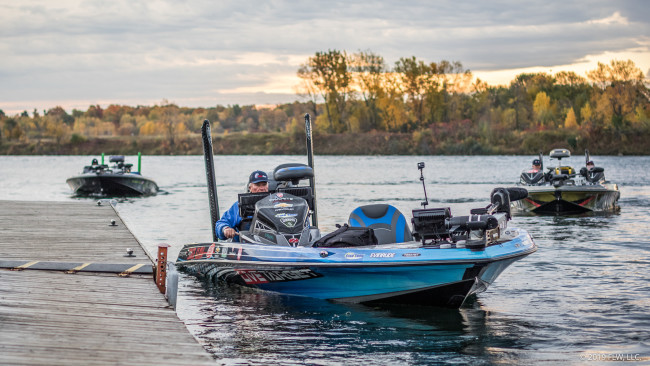
In contrast to Hegarty’s tougher report, Team USA seems to be around ’em.
“It’s been really good. The one crazy thing is that the fish aren’t everywhere in this lake. They’ve migrated to about a five-mile stretch of the lake where it seems like 90 percent of the fish are,” says Scott Martin, who led Team USA to Gold in the spring of 2018 on Lake Okeechobee. “I’ve never quite seen something like that happen. We spent a few days milling around in some places that looked great, but they just didn’t have any fish. With that being said, we’ve probably had 21 or 23 pounds every single day, and I guarantee every one of these boats has probably done roughly the same thing.”
Regardless of practice, everyone seems to think big weights will be key this week. St. Francis is no stranger to 25-pound bags of smallmouths, and the fall is as good a time as any to catch them.
“It’s always a great time to come up to this part of the country,” says Jacob Wheeler, who’s fishing for Team USA for the first time. “I’m really impressed with this pool and what all’s here. There’s a lot of potential for a lot of big bags, and we’ve barely scratched the surface for what this place has potential-wise. The big thing here is going to be about everybody catching 20-plus pounds. It’s going to take a 20-pound average; that’s how it’s going to be.”
Historically, tournaments on the St. Lawrence have been won in a few feet of water on finesse and reaction baits and 45 feet or more on drop-shots and Ned rigs. For this tournament, practice reports seem to put the fish more in the mid-depth range and catchable with a handful of different techniques. One X factor is definitely the weather. Day one of the tournament promises rain and heavy winds, with Friday looking quite nice by comparison.
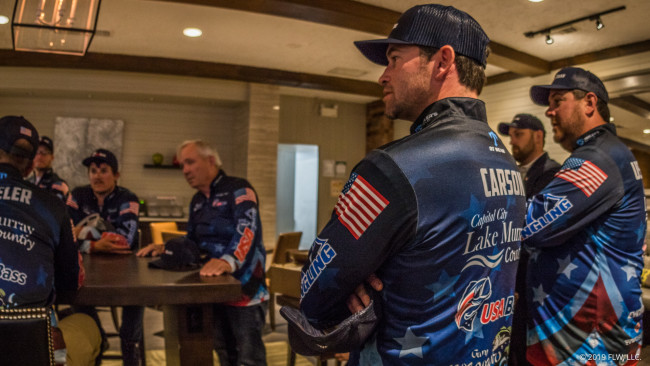
Teaming up
Because of the team format, all the anglers have incentive to communicate and share information. For most folks, it’s a bit of a new dynamic, though not unwelcome.
“You shared information before, but not to this extent, where you’re literally talking about the exact spot and everything,” says Wheeler. “This deal is really cool. You see a lot of buddies that you’ve been competitors against all your life, and now you’re teammates.”
Martin has fished in every recent international event for Team USA, so he’s familiar with the dynamic.
“This format is very unique,” says Martin. “I’ve spent my whole career fishing traditional formats, where you’re just going out trying to do the best you can individually, but with this team format we’re having meetings every night and talking about where we got bit and how we got bit. It’s really neat. If Wheeler’s catching 25 pounds he’s probably going to get ahold of one of us and give us a little tip or wave us over.”
During tournament hours, team members can call each other to give updates or share information, but they can’t actually fish right on the same spot. Unlike in many American tournaments, there is a 55-yard buffer zone in effect between boats while fishing, so you won’t see Scott Martin and John Cox going cast for cast within conversation range.
“I like the format. I think it’s fun,” says Martin. “I’ve spent 20 years fishing for myself, but I truly enjoy this. It’s a good opportunity to kinda hang out and get to know guys I’ve competed against for years.”
Even the teams with local talent have been able to put that aside to pull in the same direction for their country.
“There are three teams here that are local, and having some of their knowledge will benefit some of the guys that aren’t,” says Hegarty. “Maybe it’s a little tougher for them to share information, but for me, we typically don’t fish tournaments here this time of year, so what we’re finding now we might never fish again.
“I think it’s pretty cool,” he adds. “A lot of people fish tournaments thinking about the money – what they can get paid, what they can cash. But there’s more to tournaments than just cashing a check. Here there’s the pride of doing well on a body of water and the pride of country.”
Participating teams
Team Akwesasne First Nation
- Cass Terrance and Nolan Thompson
- PJ Burns and Norman King
- Tyson Thompson and Morris Thompson
Team Canada
- Bob Izumi and Darren Izumi
- Andy Kinstler and Scott Lecky
- Rob Lee and David Chong
- Robert MacMillan and Ryan Flaro
- Matt Massey and Robert Greenberg
- Stephen and Phil Hegarty
- Nicolas Gendron and Jason Gramada
- Brian Hughes and Anais Chaves
Team Mexico
- Carlos Medina and Omar Oropeza
- Miguel Dainitin and Jorge Dainitin
- Alejandro Morales and Nicholas Gonzalez
- Jose Gutierrez and Juan Montoya
- Arturo Saldana and Ricardo Gonzalez
- Eduardo Marcos and Eduardo Flores
- Marcelo Lozano and Rafael Chavez
Team USA
- Scott Martin and Roland Martin
- John Cox and Keith Carson
- David Dudley and Philip Jarabeck
- Jacob Wheeler and Dustin Connell
- Brian Latimer and Mark Daniels Jr.
- Ryan Latinville and Brett Carnright
- Charlie Evans and Hannah Wesley
- Cody Meyer and Jacob Powroznik